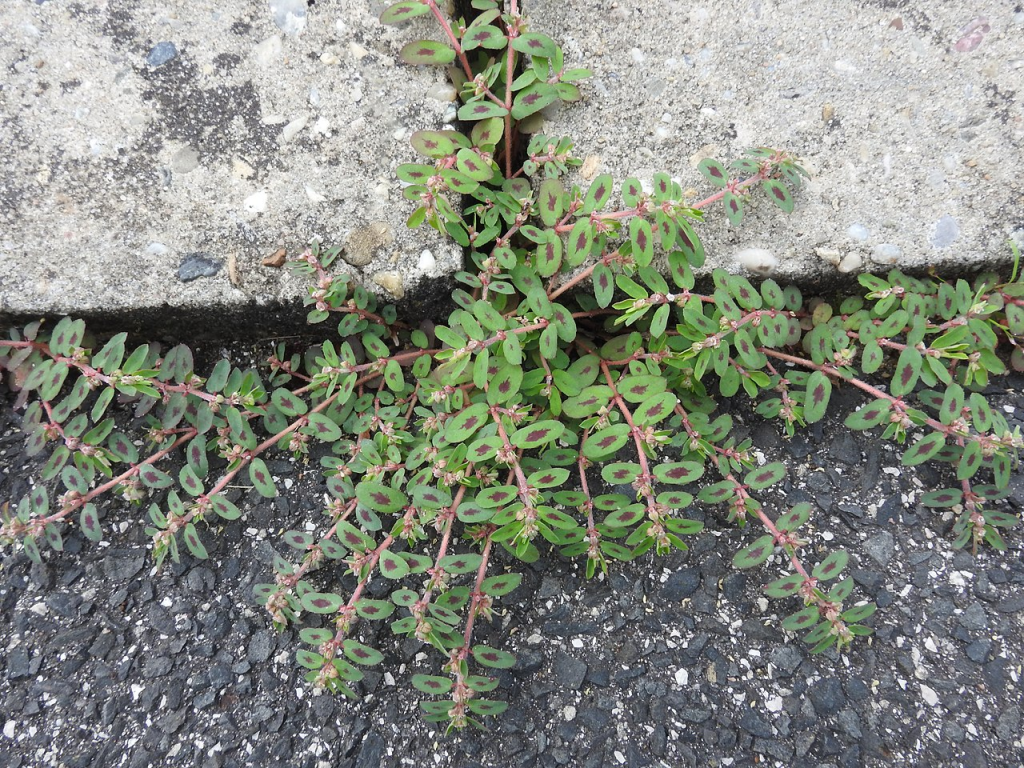
Also known as spotted sandmat, milk-purslane, and prostrate spurge, this summer annual weed is native to North America where it is found in all 48 contiguous states growing in gardens, lawns, and disturbed sites such as roadsides and sidewalk cracks. It is a member of the spurge family, Euphorbiaceae, that also includes poinsettia, castor oil plant and croton. Spotted spurge likes full sun and and dry soil. It should not be confused with Euphorbia prostrata (also called prostrate spurge) that is very similar in appearance. All parts of the spotted spurge are considered mildly poisonous to humans and can cause nausea, vomiting, and diarrhea if ingested. The sap can also cause contact dermatitis. Photo Credit: Robert Flogaus-Faust, Wikimedia Commons

Description: Growing from a taproot, the slender well-branched stems form a circular mat that is usually less than 1″ tall and can be up to 3′ across. The stems are hairy, often reddish, and exude a milky sap when broken. The round to oblong leaves are also hairy, up to 1.5″ long, and have finely toothed margins. They are dark green and often develop a red spot in the center. In summer clusters of tiny male and female flowers appear in small cup-like structures in the leaf axils of the same plant. Each cup contains one female and several male flowers and is rimmed by 4 white to pink, petal-like appendages with lobed edges and a green to red gland. The 3-celled seed capsule that follows is hairy and contains one seed in each cell. Photo Credit: Jean Jacques MILAN, Wikimedia Commons
Control: Control of spotted spurge is difficult because of its prolific seed production and short life cycle that permit it to flower and produce seeds one month after it germinates. New seed can germinate immediately or sit in the soil for years before germinating. In addition, its low height makes mowing ineffective as a control method. Hand pulling carefully so as to get most of the root as soon as the weed is seen and the application of a two inch layer of mulch are good methods of eliminating this weed over time. In severe cases or where mulching can not be employed, a preemergent herbicide can be helpful.
It grows in sunny locations and a variety of soils, and functions as a pioneer species in ecological succession. The sap of this plant is a mild skin irritant and can cause a rash in some people. The sap is poisonous and considered carcinogenic.[3][4]